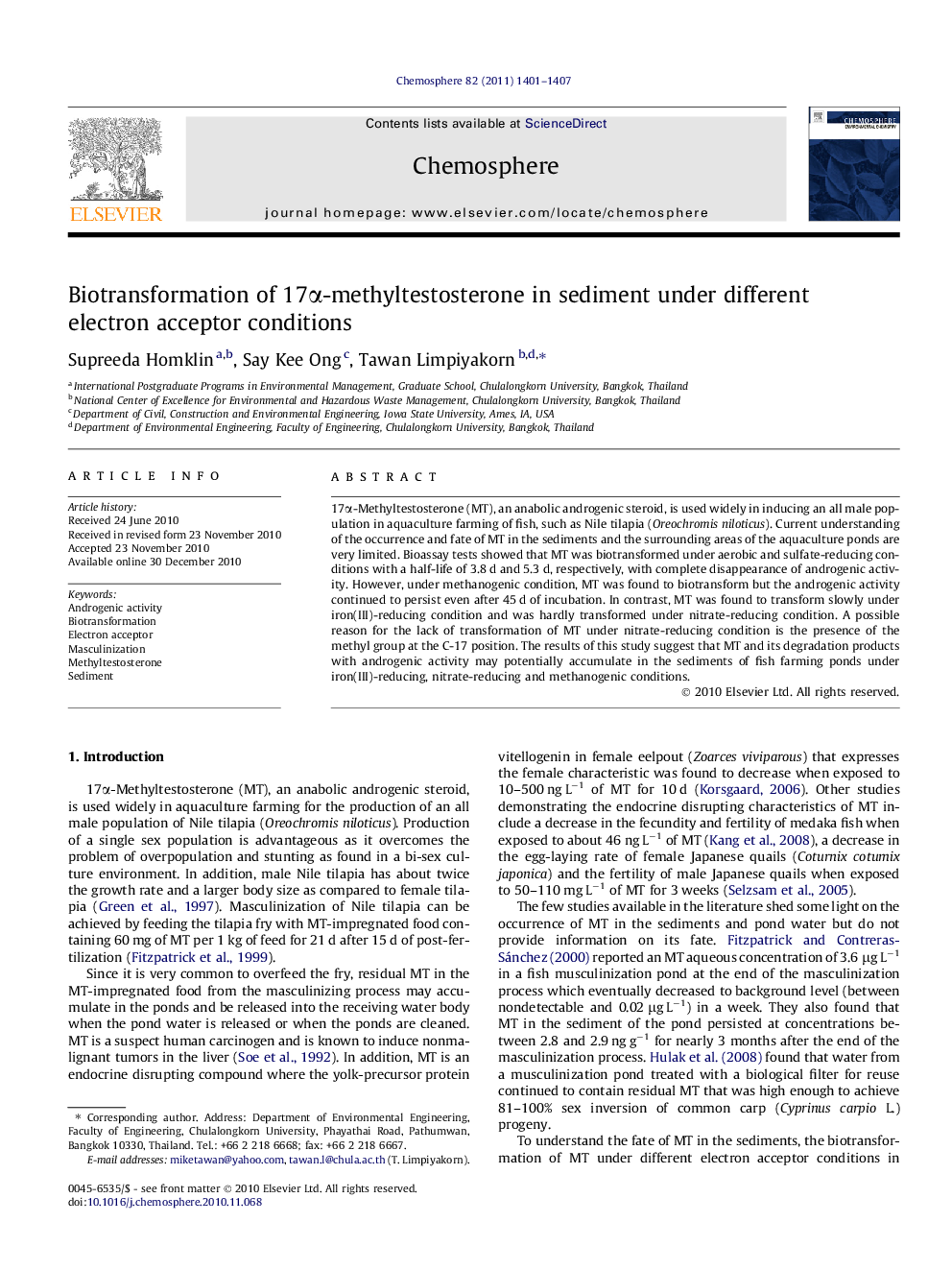| Article ID | Journal | Published Year | Pages | File Type |
|---|---|---|---|---|
| 4411346 | Chemosphere | 2011 | 7 Pages |
17α-Methyltestosterone (MT), an anabolic androgenic steroid, is used widely in inducing an all male population in aquaculture farming of fish, such as Nile tilapia (Oreochromis niloticus). Current understanding of the occurrence and fate of MT in the sediments and the surrounding areas of the aquaculture ponds are very limited. Bioassay tests showed that MT was biotransformed under aerobic and sulfate-reducing conditions with a half-life of 3.8 d and 5.3 d, respectively, with complete disappearance of androgenic activity. However, under methanogenic condition, MT was found to biotransform but the androgenic activity continued to persist even after 45 d of incubation. In contrast, MT was found to transform slowly under iron(III)-reducing condition and was hardly transformed under nitrate-reducing condition. A possible reason for the lack of transformation of MT under nitrate-reducing condition is the presence of the methyl group at the C-17 position. The results of this study suggest that MT and its degradation products with androgenic activity may potentially accumulate in the sediments of fish farming ponds under iron(III)-reducing, nitrate-reducing and methanogenic conditions.
Research highlights► Biotransformation of 17α-Methyltestosterone (MT) was investigated. ► MT was transformed to compounds without androgenic activity under aerobic and sulfate-reducing conditions. ► MT and its metabolites with androgenic activity can accumulate under iron(III)-reducing, nitrate-reducing and methanogenic conditions.
